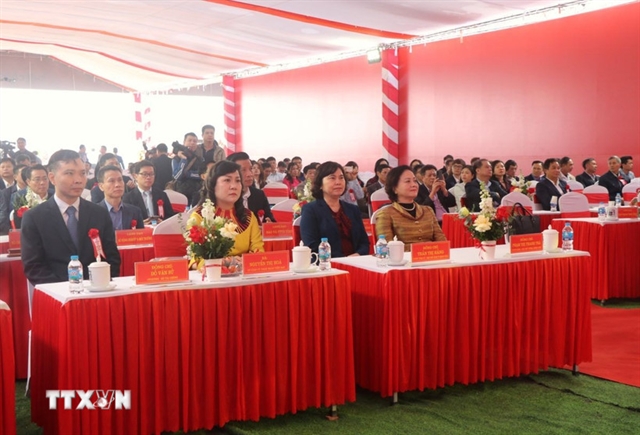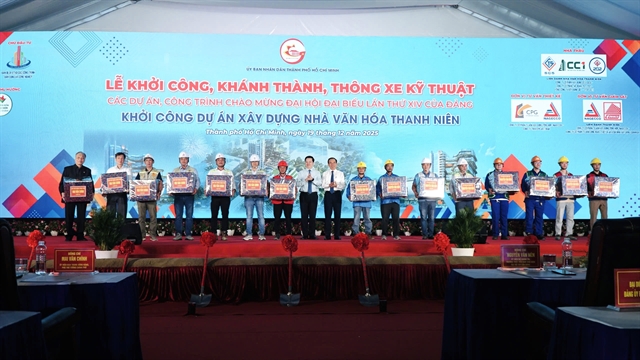 Society
Society

Experts have welcomed a shift in credit policy for hi-tech agriculture to include farmers and enterprises instead of focusing on hi-tech agricultural parks.
 |
| Hi-tech cultivation of melons in net houses in Củ Chi District of HCM City utilises SmartAgri, an application designed to manage production from planting, harvesting to preservation, following standards. - VNA/VNS Photo Mạnh Linh |
HÀ NỘI – Experts have welcomed a shift in credit policy for hi-tech agriculture to include farmers and enterprises instead of focusing on hi-tech agricultural parks.
However, they warn that without detailed implementation instructions, the move will not be effective.
Prime Minister Nguyễn Xuân Phúc has set aside a credit package of VNĐ50-60 trillion (US$2.2-2.6 billion) to encourage local farmers and enterprises to develop hi-tech agriculture.
Several experts and representatives of enterprises spoke to the Nông Thôn Ngày Nay (Today Countryside) newspaper this week about the new policy.
Đỗ Hà Nam, general director of Intimex Import-Export Joint Stock Company in HCM City, said agriculture firms need significant working capital, but accessing this has proved difficult.
“There must be large credit packages with easy, simple borrowing conditions so that agriculture firms like Intimex are able to use them,” he said.
“Vietnamese agriculture must be treated on par with other industries,” he said.
To ensure efficiency, performance conditions can be set, he said.
For instance, individuals or units should be able to create production values of at least VNĐ50 million per hectare to get permission to invest in the sector, he added.
Trần Bá Dương, chairman of the management board and CEO of the Trường Hải Automobile Company, which is interested in agriculture, said the sector cannot grow without applying the “industry in agriculture” model.
Capital access, organizational and management skills are needed for hi-tech agriculture to grow, he said.
“Harvesting, transportation and post-harvest processes currently suffer huge losses and low quality of Vietnamese farm produce,” Dương said, suggesting that a post-harvest industrial complex be set for rice production.
Võ Quan Huy, director of the Huy Long An Company in Long An Province, said one of the biggest difficulties faced by the Vietnamese farmer is mortgage. They are unable to mortgage their produce, factories and farms as collateral, according to the regulation, he said, adding that the amount of money they can borrow is a fraction of real demand.
“In terms of the VNĐ50 trillion credit package for agriculture, the State Bank of Việt Nam must ‘open its arms’ to enterprises and help them with easier access to larger loans.”
Role of banks
The State Bank of Việt Nam has lowered interest rates for agriculture loans over the past several years.
Accordingly, the rate dropped from 20 per cent per year in 2011, to 12 per cent per year in 2013. This year the rate stands at the lowest ever - 6.5 to 8 per cent per year.
Since last month, the Agriculture and Rural Development Bank (Agribank) has been preparing VNĐ50 trillion to serve individuals, households, collectives and enterprises producing hygienic, safe food.
Such individuals and other entities can get loans at interest rates of zero to 1.5 per cent per year.
The aim is to develop a green agriculture sector that provides consumers with high-quality, safe farm produce for consumers.
Three years ago, the State Bank of Việt Nam assigned Agribank to lend loans on a pilot basis to enterprises applying advanced technology in agriculture. So far 28 enterprises with 31 projects in more than 22 provinces and cities have been selected to participate in the programme.
Agribank general director Tiết Văn Thành said that the bank has implemented seven credit policies and one national programme for developing new rural areas. Farmers get priority for loans at lower interest rates, he said.
A representative of the Bắc Á Joint Stock Commercial Bank said that hi-tech agriculture projects need huge capital over prolonged implementation periods, recouping investment takes a long time, profits can be low and there are various risks involved.
“Very few enterprises will be ready to invest in agriculture if there are no supportive mechanisms like more flexible capital policies,” he said.
He said that banks should raise lending to agriculture from the current 18-20 per cent to over 30 per cent of their credit portfolio.
He also suggested stepping up co-operation among commercial banks in offering loans for big agriculture projects, especially hi-tech ones. - VNS




